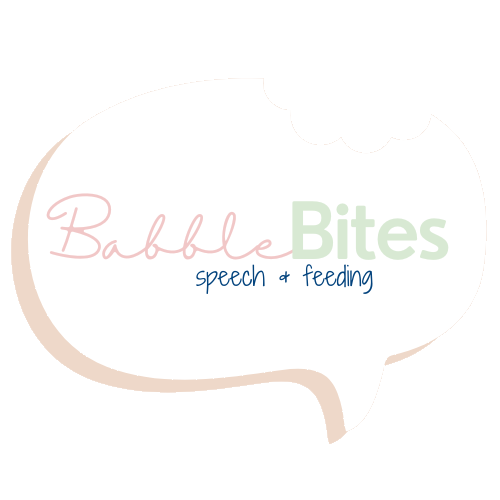Building a Language-Rich Environment Through Narration
Narrate Your Day with Self-Talk and Parallel-Talk
It’s easy to forget to talk to your baby, or even just out loud, when your little one isn’t talking yet, but hearing language in context throughout the day is extremely beneficial for language development. Self-talk and parallel-talk, or narration, consist of describing what you and your little one are doing throughout the day. This provides a language-rich environment needed for language development, especially for children with delayed language.
The Importance of Talking to Your Baby
Babies need to hear words repeated in context many, many times before they understand them, and eventually learn to use them. Narrating what you and your child are doing throughout the day provides excellent opportunities for frequent repetition of words within meaningful contexts, meaning your baby hears the words and sees or feels what they mean and relate to in the moment.
Narrate: “Time to go in your car seat, buckle in, click! You’re sitting in your carseat.”
Supporting Children with Delayed Language
It is also helpful to include both complex and simplified language while you narrate what you and your child are doing. It is important to model full and grammatically correct sentences with a variety of rich vocabulary to expose baby to many words, but long sentences can make it difficult for babies to pick out the most important words and meaning. By also modeling short simplified language in short phrases, your baby is able to hear and learn key words to help them understand better, as well as tune into words they may learn to say first.
Mastering the Use of Self-Talk
Self-talk is when you describe what you are doing.
This includes what you are seeing, smelling, feeling, tasting, and doing.
Examples of Self-Talk:
Getting dressed: “I’m putting your socks on, one foot, two feet. Time for shoes, I’m putting your shoes on. On your feet. I have to put my shoes on, too. Here are my black shoes. One shoe, two shoes. My shoes are on.”
Snack time: “Let’s open the refrigerator. I see your yogurt. I got your spoon. Let’s pick you up and put you in your chair, time to eat yogurt. I opened your yogurt. I can smell the blueberries. It looks creamy and smooth. Eat yogurt.”
Bed time: “Time for bed, let’s pick out a book. I got your bear book. We’re reading ‘Brown Bear.’ Time to turn the lights off. I’m turning the lights off. It’s dark and cozy. Good night bear, good night dada, good night [child].”
Narrate: “I’m putting sunscreen on your face, rub on, on your face. The sunscreen protects you from the sun, the sun feels hot.”
Mastering the Use of Parallel-Talk
Parallel-Talk is when you describe what your child is doing.
This includes describing what your child is seeing, smelling, feeling, tasting, and doing.
Examples of Parallel-Talk:
Breakfast time: “You’re scooping your oatmeal. You’re chewing your strawberry, mmm so juicy. It looks like you want more strawberries.”
Play time: “You got the ball. You pushed it down the ramp, weee go ball! It’s the car’s turn to go down. You found the red car. You put the red car on top. You pushed it down the ramp. Weee go car.”
At the park: “Look at you climbing those stairs! Up up up! You chose the yellow slide, you’re at the top of the slide! Weee you’re sliding down! That was fast!”
Narrate: “You’re sitting at the top of the slide, your ready to slide down, go down down down, weeee!”
Making Narration Intentional
Narration works best when it’s intentional. This does not mean you have to have a constant stream of narration throughout the entire day. By finding opportunities to add language by talking to your child, during everyday meaningful routines, we are providing them with the vocabulary to help them understand and navigate their environment, and work towards communicating with those first words. In order for children to learn to use words, they need to hear them used frequently in context, and self-talk and parallel-talk are fantastic ways to provide those language learning opportunities in a natural way.
Follow us on Instagram for “bite-sized” information on language strategies:
Click below to pin this post to Pinterest to save for later and share!
This website and information on this blog post is provided for educational purposes only. It is not meant as medical advice, intended to replace a speech-language assessment, therapy from a speech-language pathologist, or serve as medical care for a child. It is recommended that you discuss any concerns or questions you might have with your speech-language pathologist, pediatrician, and medical team, and develop an individualized team plan specifically for your child.




